How to Start a Flower Garden?
Do you want to play Picasso or Michaelangelo?
Well, here’s the thing
You don’t have to be an art prodigy to do this. You just need to let out whatever innate creativity was in you!
Instead of canvas, you can avert your eyes to your lawn– a fifty or five hundred square feet lawn would suffice– and you can paint and color it to fit your tastes.
And this might shock you.
The whole process doesn’t have to be costly and tiring. As easy as stroking brushes, to start a flower garden is easy as pie!
With the right guidance, you can transform that piece of land into the most colorful and beautiful garden there is in the neighborhood!
Related: How to Start a Vegetable Garden?
Getting the Ground Ready
Starting a flower garden can be rewarding, especially for people seeking leisure activities to spend their quality time with.
And let me tell you
The secret behind a successful flower garden is the right soil preparation. For starters, you might consider the following steps in getting your ground ready.
1. Clearing the sod
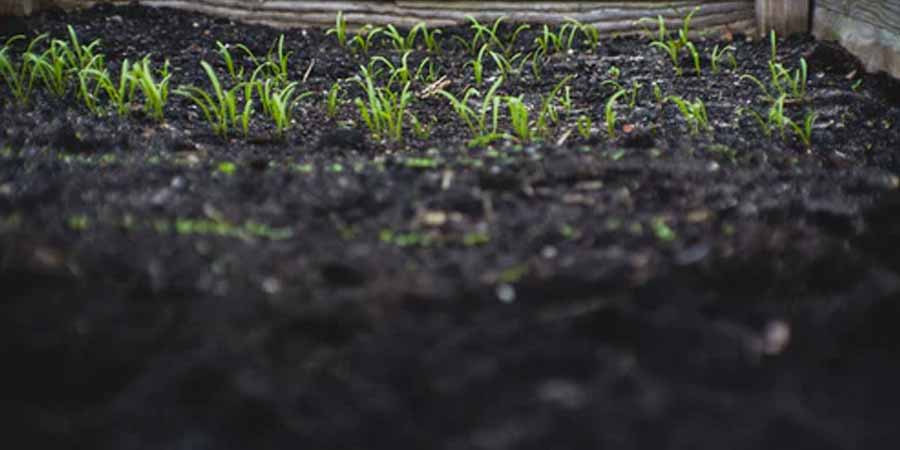
An essential step to ensure that your flower bed will yield healthy flowers is to clear all existing grass and weed. It is a crucial first step you should put in mind.
Giving your flowers its personal space to grow means no competition for the necessary nutrients needed for your flower’s development.
And how would you do that?
Merely using a shovel to dig will allow you to detach the grass and weeds from their roots. Then, you can now easily pick the topmost layer of the grass.
If you find this tiring, there’s another way!
Laying out all areas with cardboard is also proven effective. Just arrange it covering all areas of the ground and put a 3-inch compost (7.6 cm).
Next is the waiting game. Just leave it there and come back after four months. After that, the flower bed would now be in its best condition to facilitate your flowers’ growth.
2. Choosing the Garden Theme
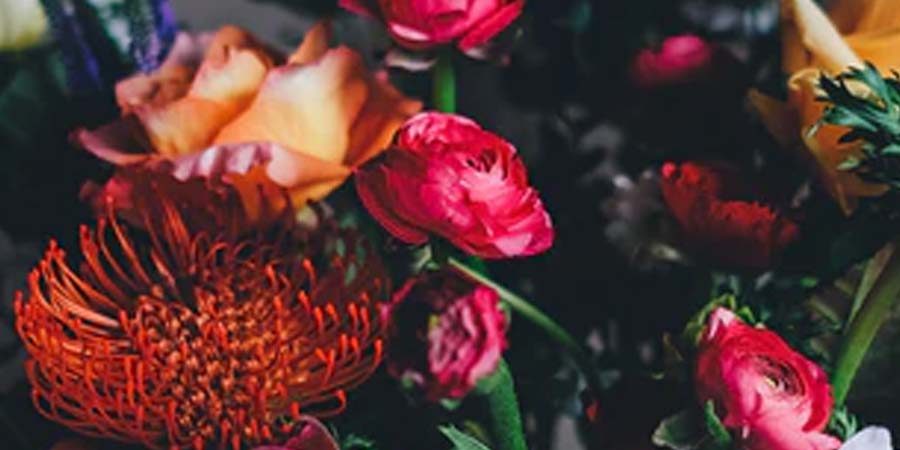
What to do next is where you show the personal signature of your creativity.
When creating a garden theme, you don’t have to start from the beginning and create your own.
You can try considering different approaches, which can be done through searching for garden ideas on the internet, sitting in the garden aisle in a nearby bookstore, or acquiring references from gardens in your neighborhood.
This one is really up to you.
But keep in mind!
Determining the theme is a crucial step that will affect the appearance and outcome of your flower garden.
So don’t rush it, and take some time to think.
3. Lay-out planning
Upon deciding what to do with your garden, you may want to level up your game and proceed to the actual planning.
Grab the nearest pen and paper to plot the positioning of the flowers. Randomly planting the flowers on your lawn might compromise the arrangement you had in mind.
So, mapping it out is the safest way!
Here’s a piece of advice.
To gain further spatial awareness of the flower garden’s location on your lawn, you can try including your house and the nearby structures in your sketch.
It will help you realize the compatibility of the positions.
So, put in mind
The more detail your sketch has, the better foresight you have for the probable outcome.
Besides that, you can easily imagine the amount of sunlight your flower garden would receive.
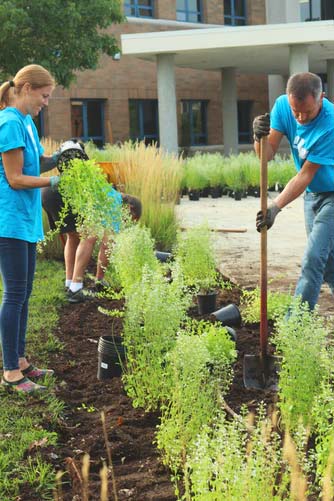
After all, a partial or full sun exposure might make you think twice of the type of flowers you’re planning to put in your beds.
Sunlight is a necessary condition you need to consider in growing flowers.
4. Tilling is caring
Do I have to say it?
To start a flower garden means you are hardworking enough to regularly till the soil. It is crucial, especially in the preparation process, where it conditions the ground to be loose and crumbly.
Not only that, doing this every day will kill the weeds that are starting to grow.
So what should be done?
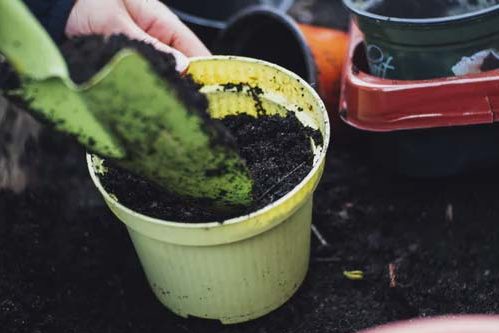
The rake would do most of the job, especially in breaking any clods. For the rocks, you have to pick them up to make the topsoil smooth. It will help the flower seeds to germinate quickly.
So no to slacking off. You gotta till the soil!
5. Improving your soil
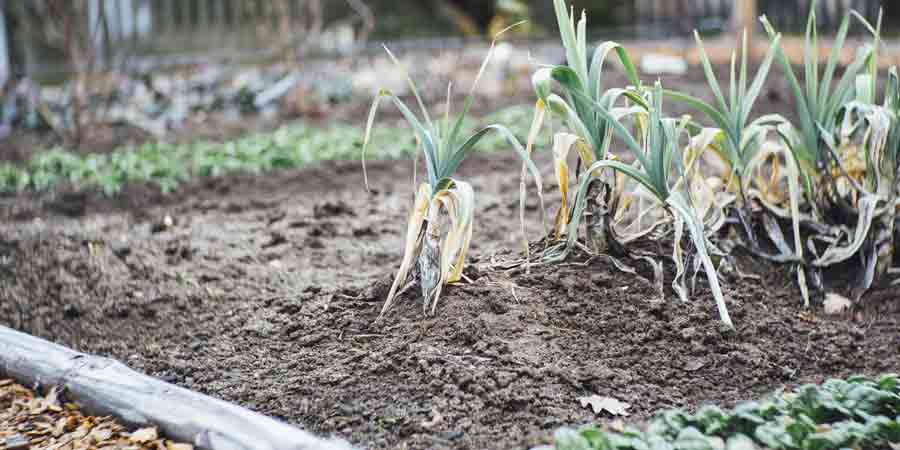
To further fertilize your soil is necessary, especially for flowers that need delicate care.
And know this
Most soils do not have this built-in condition, and it is up to you to further enrich it.
The best way to fertilize your soil is to add a 6-inch compost. You could use put additional organic materials such as shredded leaves or dead fibrous moss.
Usually, experienced gardener utilizes the most accessible– the manure wastes from animals.
While digging the soil and burying the materials is recommended, you can just plainly leave it in the topsoil. Eventually, these organic materials will decompose and will nourish the soil.
6. Soil not suited for gardening? Try raised beds!
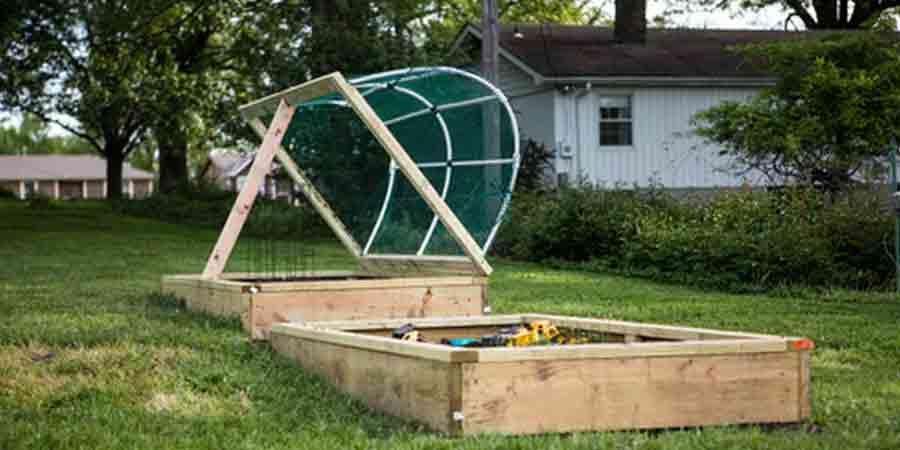
Upon assessing the soil condition, we sometimes realize the necessary work and time to bring it to the most suitable condition for a flower garden.
Well, I have good news!
You can try creating a raised bed. These beds have proven themselves beneficial in high clay content soils. Also, they are suitable in areas with naturally rough or loose soil composition.
Just remember
In creating one, you should apply your creativity that matches your style! You can also consider buying a gardening kit from the nearby store and simply put some soil in it.
That will do the job!
Obtaining Flowers
- Be picky
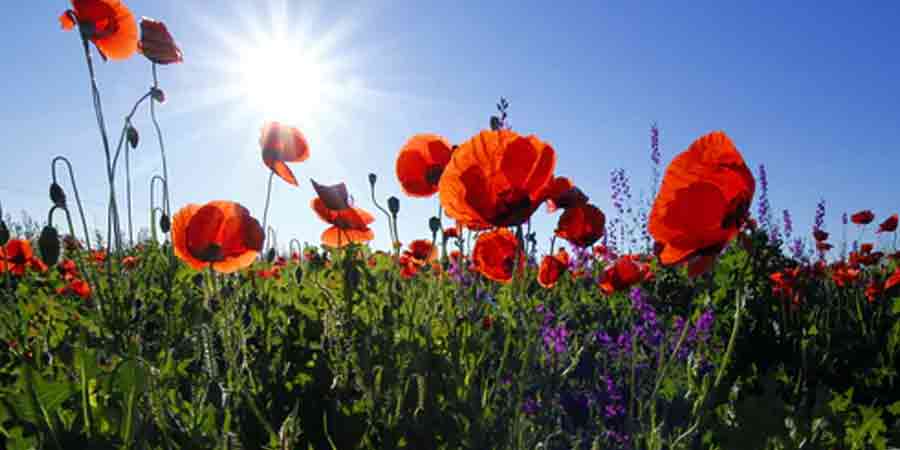
You heard that right.
You can’t just randomly pick flowers.
Eeny, meeny, miny, moe won’t just work.
For beginners, finding the best flower to grow can be very stressful. Some plants require daily maintenance, and others would prefer being left alone.
Without extensive research, you’ll have to do the tiresome trial-and-error method just to determine which type of plant would suit you.
Some flower garden requires work. So, you have to choose a plant that fits your style, which coincides with the amount of care you could give!
And oh, another thing!
You also have to consider the amount of sunlight and shade in your area. The growth of the flowers usually depends on the required sunlight it needs.
Shady areas should have flowers that need minimal sunlight. It goes the same way for sunlight-needing plants.
Some plants are perennials or those that require less maintenance. It just keeps re-growing every year but doesn’t bloom as much as annuals.
If you are into perennials, the following are for you– roses, Russian sage, black-eyed Susan, daylilies, pansies, irises, and lamb’s-ears are for you.
The shorter-lived ones are annuals. Compared to perennials, their life cycle usually ends with one growing season. So it needs to be re-planted once in a while.
Annual flowers include zinnias, marigolds, cosmos, and sunflowers.
If you think you can handle both, you can always try mixing annuals and perennials. Either way, these flowers will surely make your neighbors envious.
Oh, before I forget!
Your plant should be available in your area. Try crowdsourcing on the nearby nursery or check online to know if your desired plant grows in your zone.
Beginners usually turn a blind eye to these facts.
So first things first.
You have to know which flower to plant.
- Seeds, or flowers?
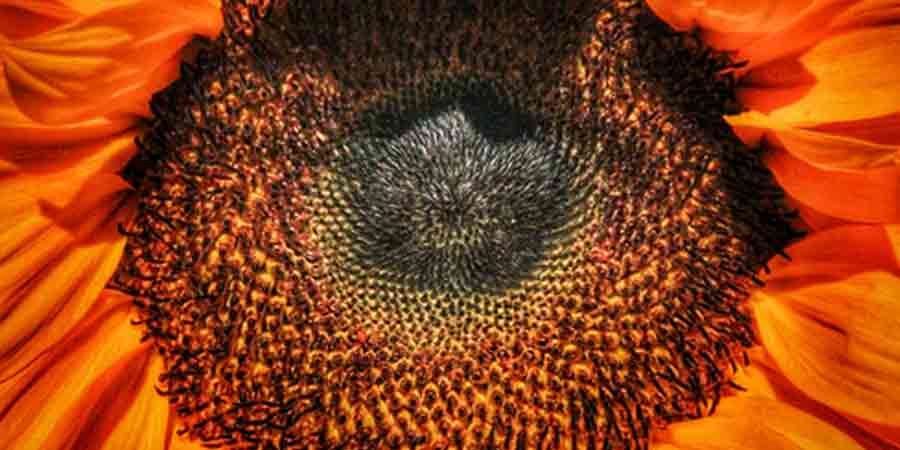
In preparing the flower bed, you must’ve asked yourself which one yields the best result.
But take note of this!
Seeds or flowers, whatever you choose, don’t matter. If you’re getting the grown flower to transfer it to your lawn, you just have to make sure that the plant is healthy with lots of green leaves on it.
But if you want to grow the flower on your own, you can buy your seed from the nearest garden store. There are also seeds that you can purchase online.
There is a variety of flowering plants out there. I’m sure you’ll be able to find one that fits your style.
- Which containers?
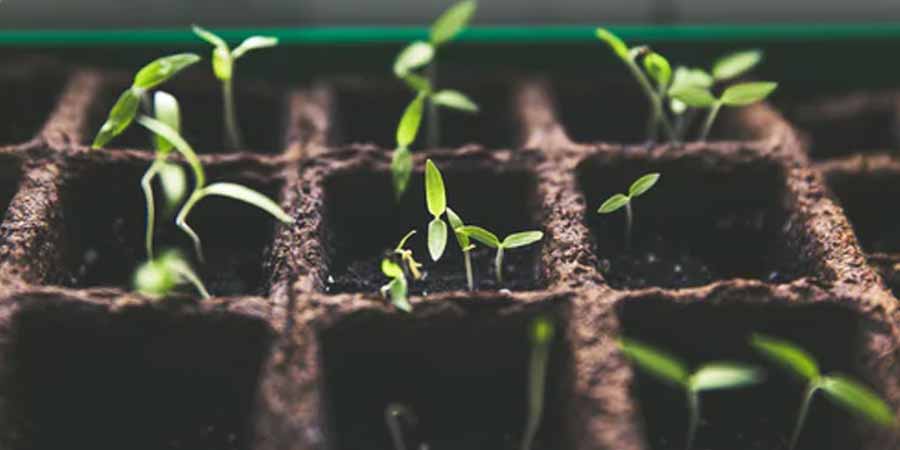
Some people wouldn’t prefer the immediate planting of seeds to the flower beds.
And why is that?
Hmm, primarily because there’s a higher survival rate for any plant if germinated in a separate container before actually planting it.
So I recommend this one to you.
Make use of cell flats.
Cell flat is the most used tool to ensure that there are spaces between plants. It also ensures no intertwined roots that could damage other plants when pulled in the actual planting.
But here’s the cheaper way.
When isolating the seeds from the rest, you can always try putting them in separate containers or make use of the egg cartons.
Always put in mind that your seed would need a hole to drain out, so a thumbtack or nail would do the job for you.
If ever you found any biodegradable containers, you can bury them in the ground along with the seeds in the actual planting process.
Easy, right?
- Consider seed-starting mixtures
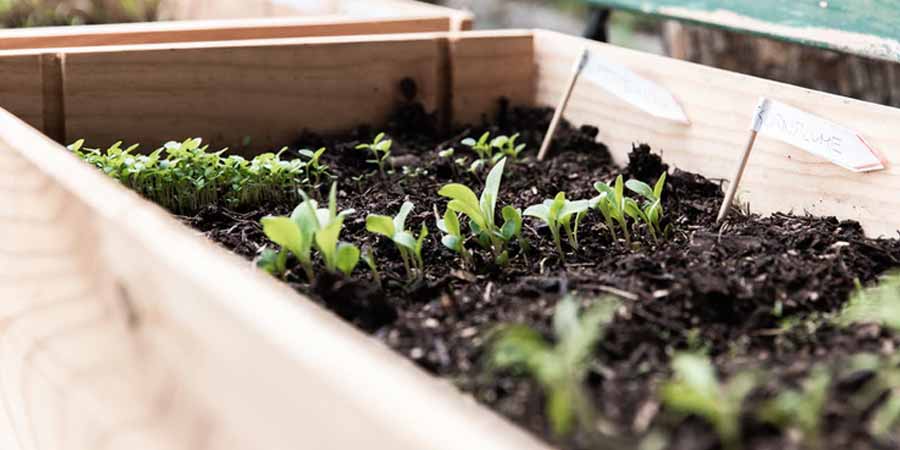
You have to put this in mind.
When talking about seed-starting mixtures, it must not have any soil. For that, you must drain the pot or container carefully.
Also, you have to make sure that there are no weed seeds. It might compete with your flower for the mixture’s nutrients that might hinder its growth and development.
- Time it right
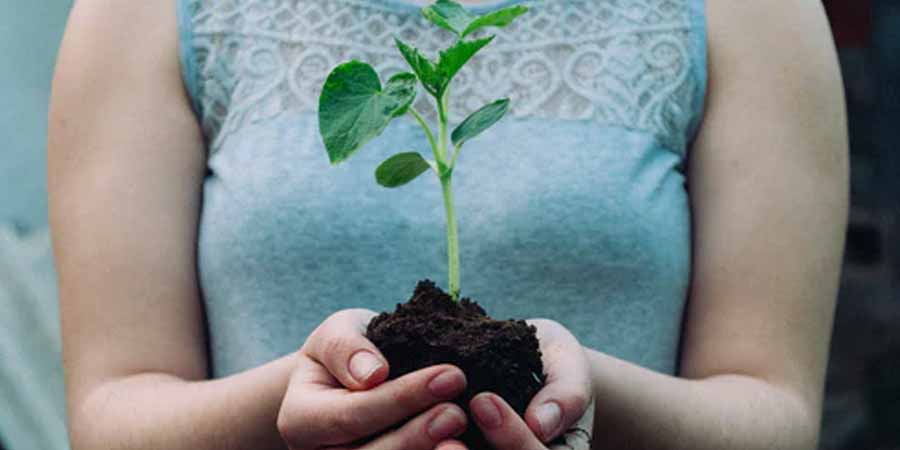
Based on the seed packaging, you will know the right schedule of a specific seed for planting. Try not to misplace the packaging!
But still, if you have already thrown it away, worry not!
You still have the internet, and it contains most of the essential details that will help you plan your seed planting.
Let’s get back to the topic.
Now, know that timing it right is crucial. The usual schedule is during 2-3 weeks prior to the last frost. And if you got it early than the prescribed planting period, it might outgrow the containers.
And this is the least preferred. Why?
It will give you a hard time moving to your flower garden, and you don’t want that!
- One seed per container.
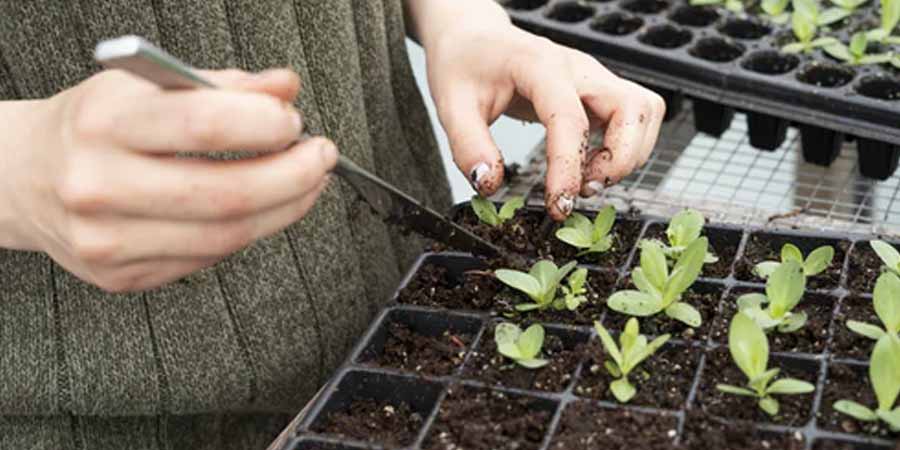
For the general rule
There must only be a single seed planted in each container. It ensures no competition for nourishment or the intertwining of roots, which is troublesome in transferring the flower garden’s seedling.
But know this
You should always follow the directions for the plant. Each flowering plant requires specific care.
Bury the seed in the ground with a depth of four times the seed’s width. It only means that the smaller the seed, the closer it should be to the surface.
Labeling it will help you determine the seeds.
Jot this down!
You should regularly moisten the soil. It will help in the development of your plant’s roots.
- Proper lighting is the key.
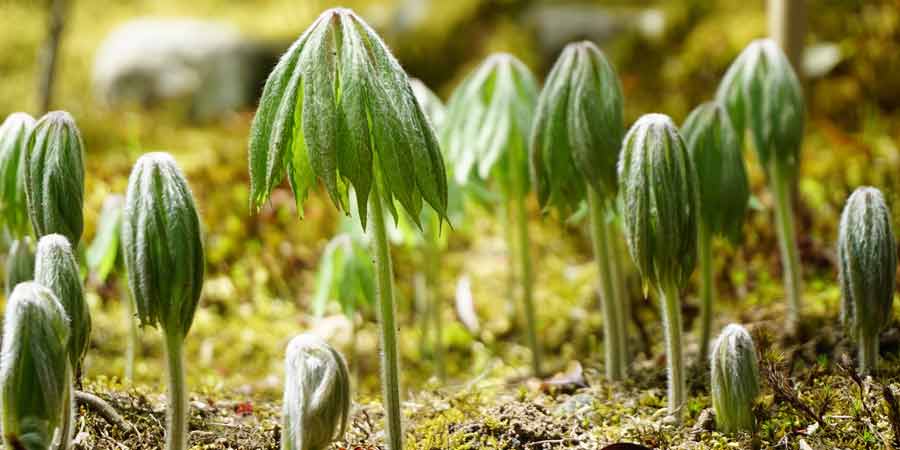
When you’re thinking of putting the seedlings on the window ledge, you have to think of another way.
Here’s why
The temperature is inconsistent. It can be freezing at night or hot in the day. So you must pick the right area. You need a place to make sure that your plant could get enough warmth to grow.
So I have a good idea.
You can use a grow light and groom your seeds indoor or somewhere in your house. You should also consider buying heating pads, which can be purchased online or in nearby stores.
Here’s what you need to know about these pads.
It is required to put pads inside the containers because the heat will give the plants sufficient warmth.
As for the grow light, do not leave it unattended. Try to limit the exposure to 12-16 hours per day.
Planting Your Flowers
- Supplement slow-release fertilizers.
The preparation of your bed must include these slow-release fertilizers. Not only that it adds natural nutrients to the soil, but it also decomposes whatever organic materials there is.
And don’t forget.
Fertilizer must go side-by-side with tilling. The back of the package will tell you everything you need to know.
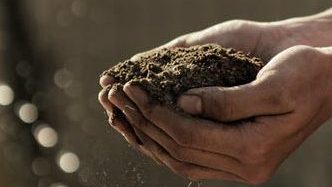
- Dig for a hole.
Well, this will not be difficult.
Just use a trowel to dig a hole. It must be large enough that the roots must not be crumpled.
Just to be sure
Separate all the roots gently before putting them in the hole.
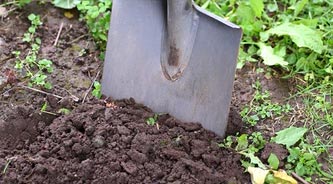
- Set the plant.
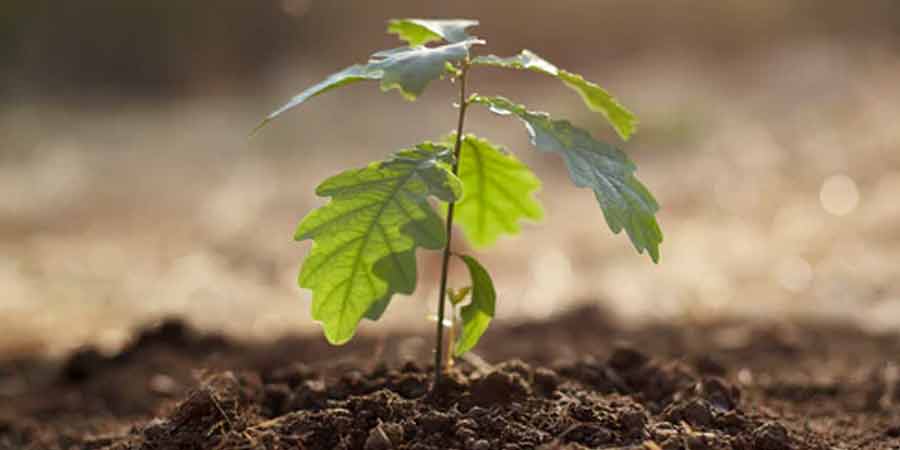
Putting the plant comes next, and this is where you set the plants in the hole.
Here’s what you should do
Upon filling the hole with soil, try to level it with the ground. You can use your bare hands to pat it. Then you can water it thoroughly.
Estimating the distance between each plant is up to you. Try to picture out their sizes in their mature stage, and you’ll pull it off.
- Water as needed
Well, this will not be difficult.
Just use a trowel to dig a hole. It must be large enough that the roots must not be crumpled.
Just to be sure
Separate all the roots gently before putting them in the hole.
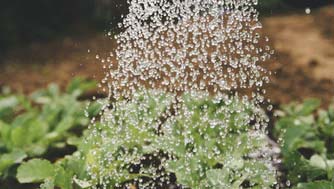
I bet it is difficult to find any article that says plants can independently grow without water.
So know this
Flowering plants need to be watered at least every other day, especially upon setting in the ground.
So if you see them wilting under scorching heat, take the initiative to moisten them.
Conclusion: How to Start a Flower Garden?
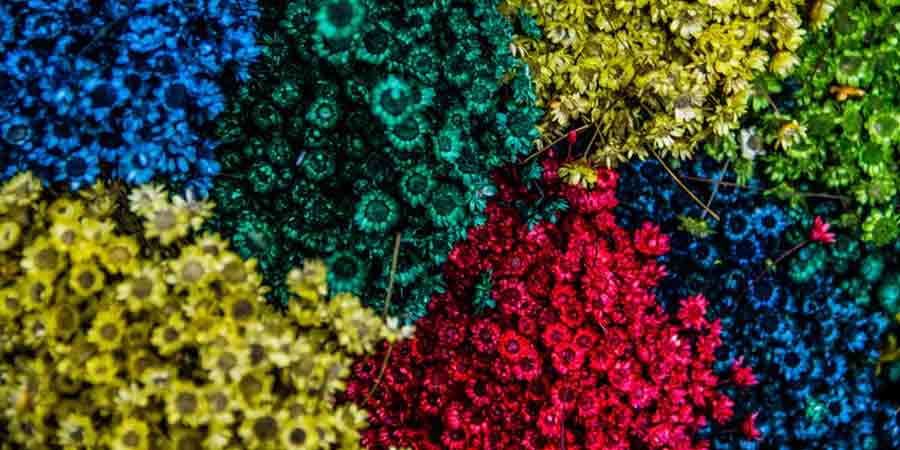
You see
Planting flowering plants is similar to a large-scale painting. But what’s unique about this is that it changes every day.
The budding season will give your canvas a new look– and another image awaits during the flowering season. Wasn’t it like raising your artsy self on an entirely different level?
So what are you waiting for? Grab that gardening kit and venture into the gardening world!
Back to Home Page: ShaneTurrell
